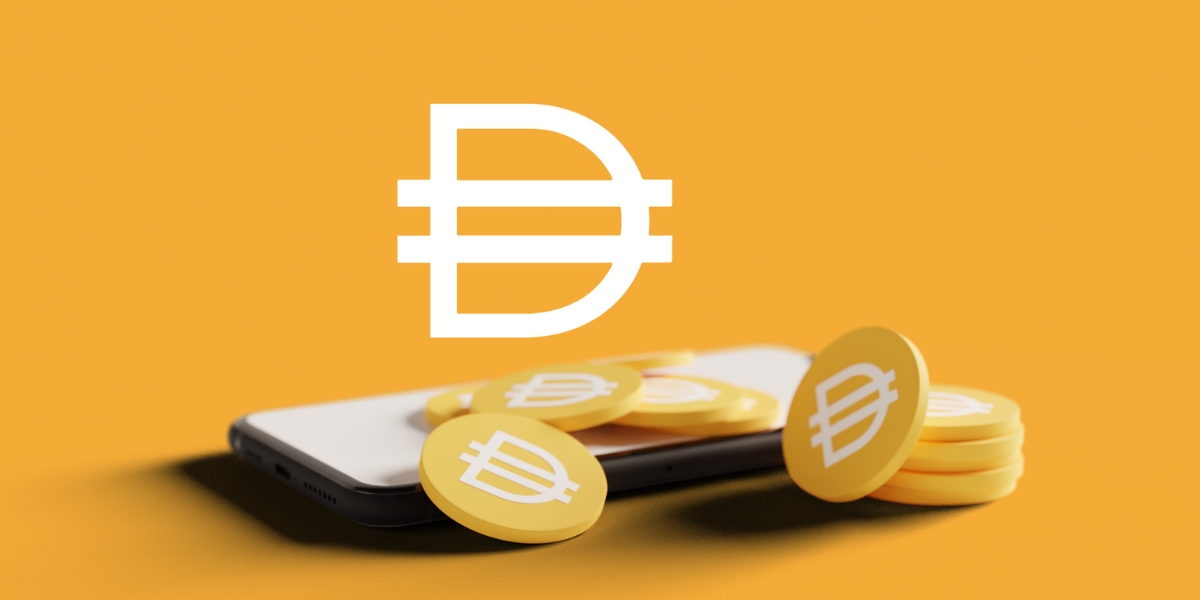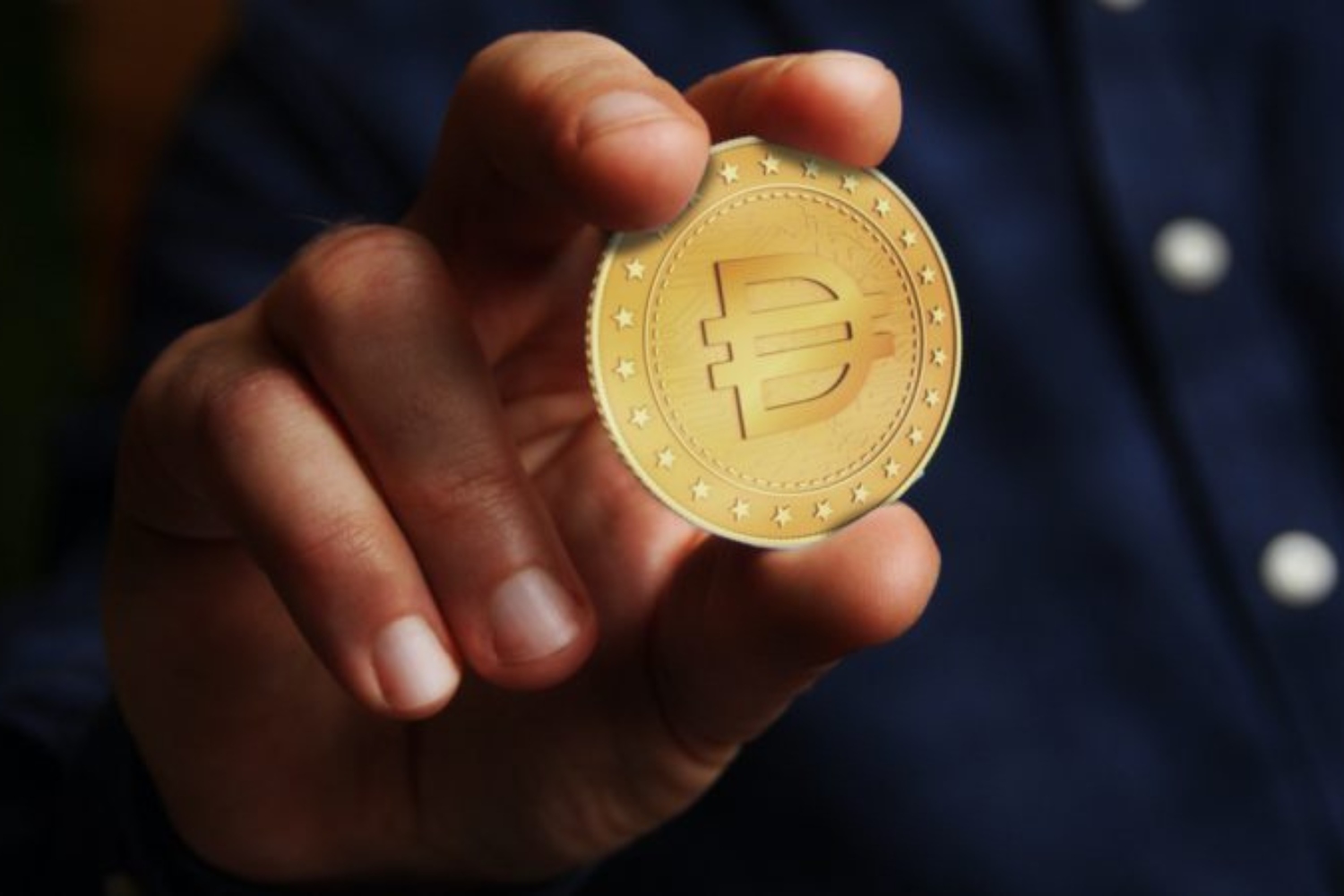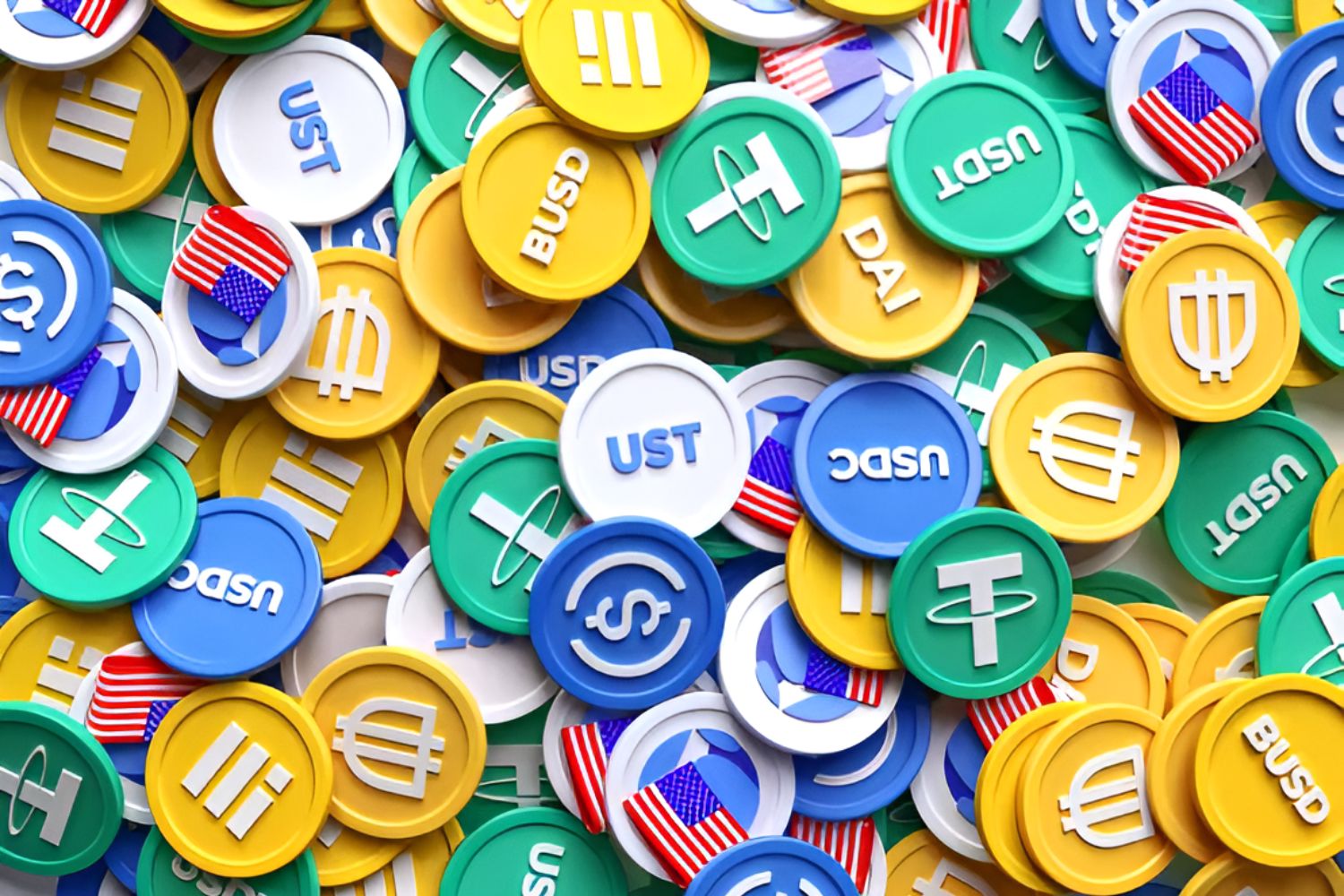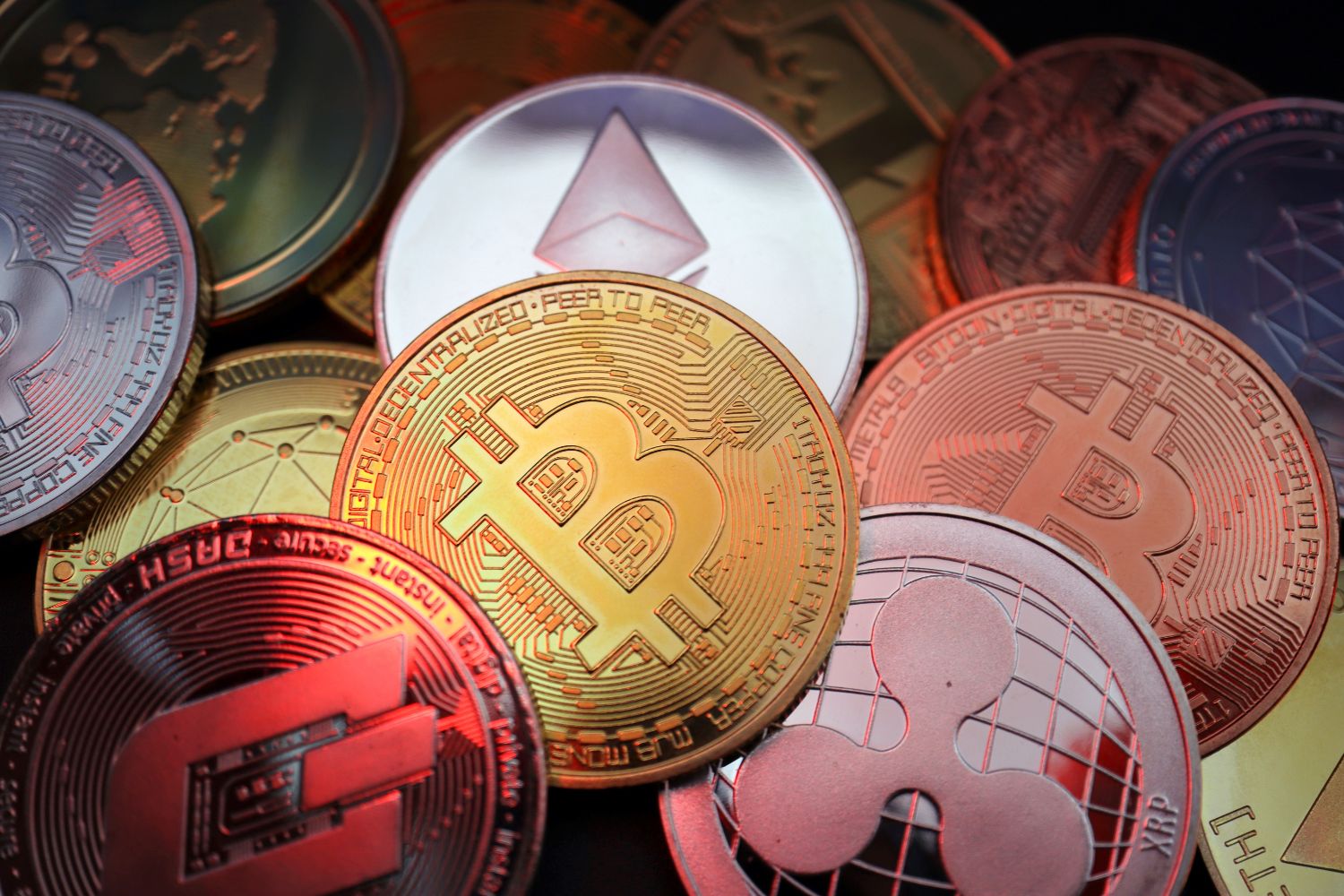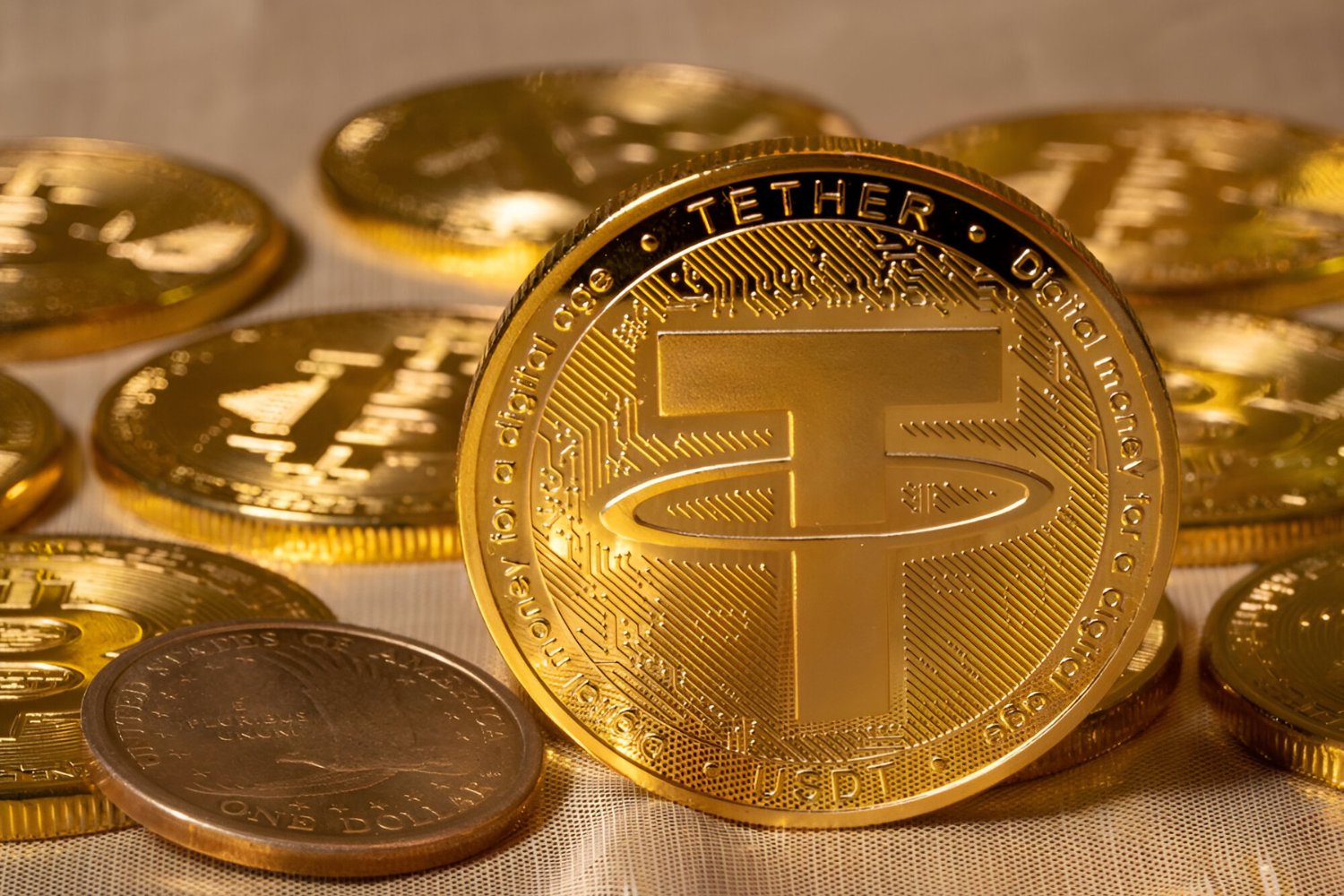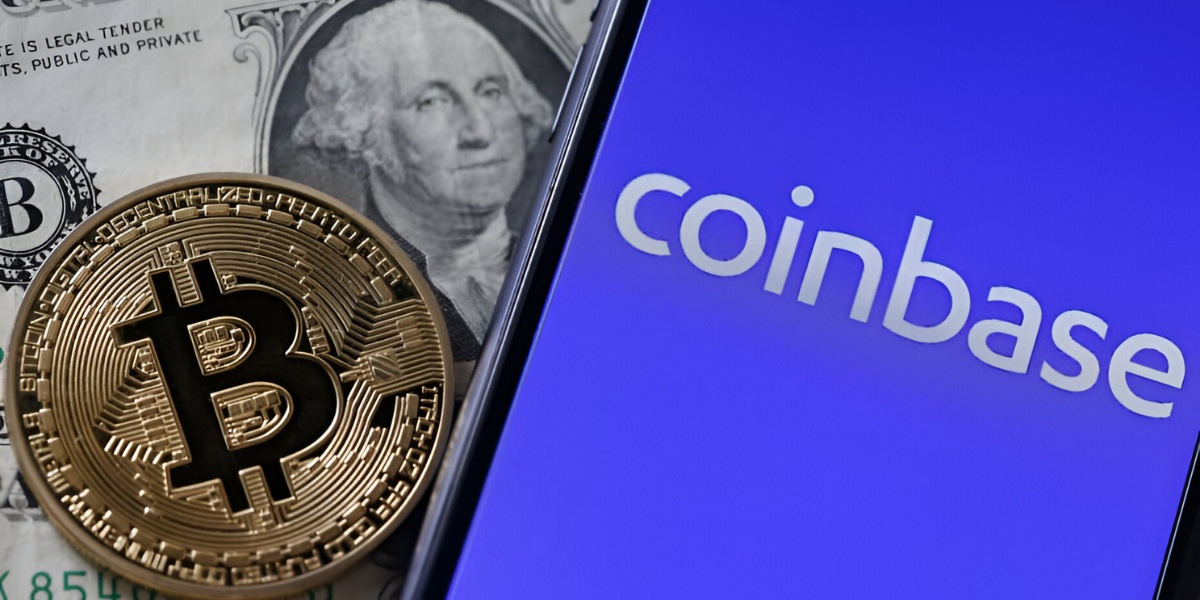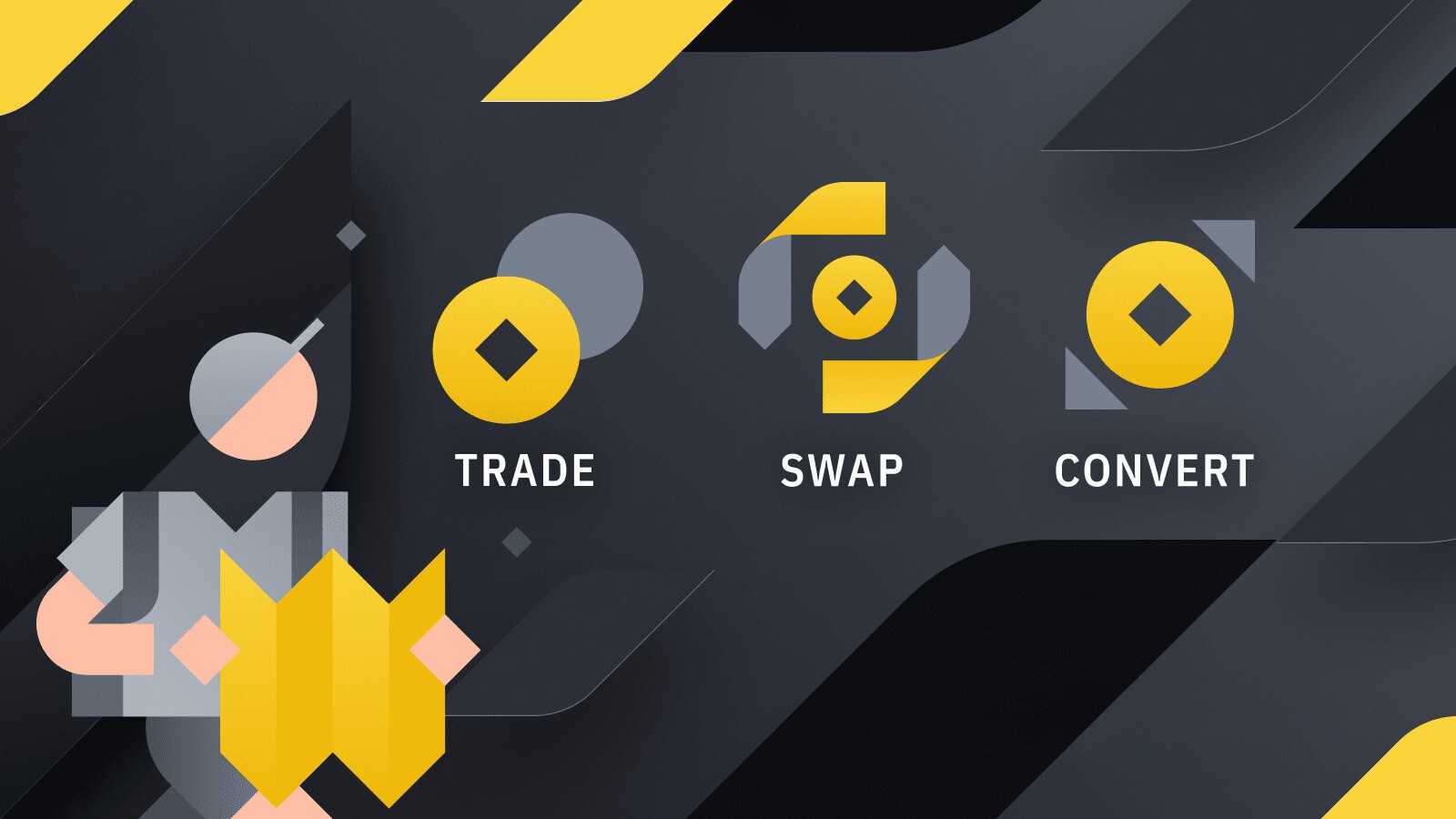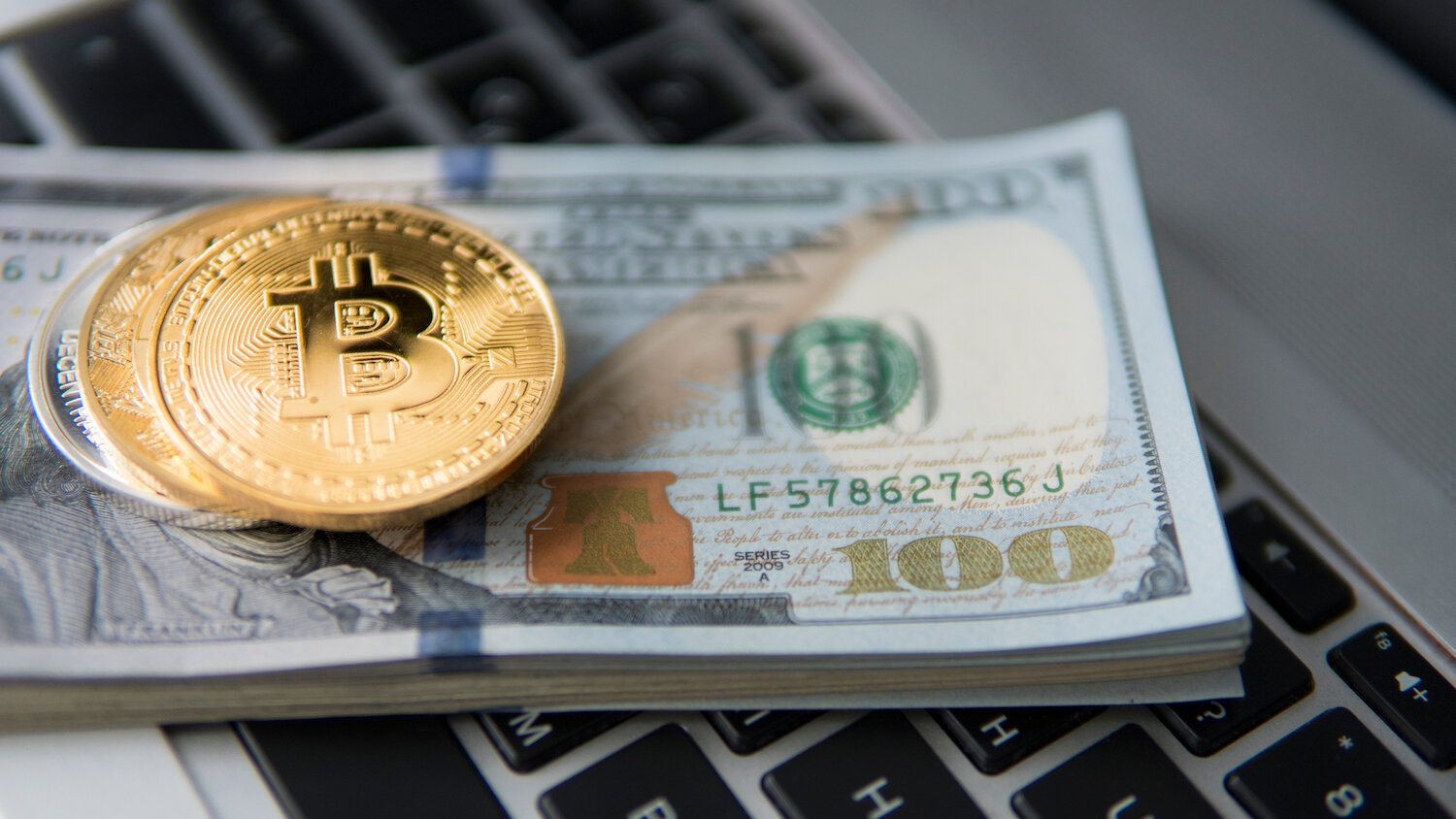Introduction
Welcome to the world of cryptocurrencies, where innovation and volatility go hand in hand. As the popularity of digital currencies continues to rise, one challenge that frequently arises is their inherent instability. Fluctuations in market value can be unsettling for users and hinder the mainstream adoption of cryptocurrencies. This is where stablecoins come into the picture.
Stablecoins, as the name suggests, aim to provide stability in the volatile world of cryptocurrencies. These digital assets are designed to maintain a relatively stable value, often pegged to a real-world asset like a fiat currency or a commodity. One such stablecoin that has gained significant traction is Dai.
In this article, we will delve into the concept of stablecoins and explore the unique features and mechanisms behind Dai Stablecoin. By understanding how Dai achieves and maintains its stability, we can uncover the benefits and potential use cases of this innovative digital asset.
So, if you’re ready to discover a stable and reliable solution amidst the turbulence of the crypto market, let’s dive in and explore the world of Dai Stablecoin.
What is a stablecoin?
A stablecoin is a type of cryptocurrency that is designed to minimize price volatility and maintain a relatively stable value, typically against a specific asset or a basket of assets. Unlike traditional cryptocurrencies like Bitcoin or Ethereum, which experience significant price fluctuations, stablecoins aim to provide a more predictable and reliable means of storing and exchanging value.
There are different types of stablecoins, each with its own mechanism to achieve stability. Some stablecoins are backed by fiat currencies, such as the US Dollar or the Euro, held in reserve by a centralized entity. These are known as fiat-collateralized stablecoins. Other stablecoins are backed by commodities like gold or silver, which are stored securely to maintain their value. These are called commodity-collateralized stablecoins. Finally, there are algorithmic stablecoins that use complex algorithms to adjust the supply or demand of the stablecoin in response to market conditions.
The main goal of stablecoins is to provide a reliable medium of exchange and a store of value, similar to traditional fiat currencies. This stability makes stablecoins more suitable for everyday transactions and helps to mitigate the volatility commonly associated with other cryptocurrencies. Stablecoins also offer the benefits of blockchain technology, such as fast and secure transactions, transparency, and borderless accessibility.
By bridging the gap between traditional financial systems and the decentralized world of cryptocurrencies, stablecoins have the potential to revolutionize the way we transact, save, and invest. They provide stability, ease of use, and global accessibility, making them an attractive option for individuals, businesses, and even governments.
Now that we have a basic understanding of stablecoins, let’s explore one prominent stablecoin in detail: Dai Stablecoin.
Why is stability important in cryptocurrencies?
Stability plays a crucial role in the widespread adoption and practical use of cryptocurrencies. While the volatility of cryptocurrencies may attract investors looking for speculative gains, it can hinder the everyday usability and reliability of digital currencies. Here are a few reasons why stability is essential in cryptocurrencies:
1. Store of Value: A stable cryptocurrency acts as a reliable store of value, similar to traditional fiat currencies. Users need to have confidence that the value of their digital assets will not erode rapidly over time. Without stability, individuals may be hesitant to adopt cryptocurrencies for long-term savings or investments.
2. Medium of Exchange: For cryptocurrencies to function effectively as a means of exchange, stability is vital. Merchants and consumers need assurance that the value of the currency they transact with will remain relatively constant. Without stability, cryptocurrency holders may face challenges in pricing goods and services accurately, leading to friction in everyday transactions.
3. Cross-Border Remittances: Cryptocurrencies offer the potential for efficient and low-cost cross-border transactions. However, without stability, the value of the currency during the time of transfer can change significantly, impacting the purchasing power of the recipient. Stablecoins provide a solution to this problem by ensuring that the transferred value remains relatively stable.
4. Financial Inclusion: Many people around the world do not have access to stable financial systems and suffer from hyperinflation or currency devaluation. Stablecoins can provide these individuals with a reliable and accessible form of currency, enabling them to participate in the digital economy and protect their wealth from economic instability.
5. Investor Confidence: Stability is crucial for investor confidence in the cryptocurrency market. While volatility can attract speculators, it can also deter institutional investors or those looking for a more predictable investment environment. Stablecoins provide a bridge between the traditional financial world and cryptocurrencies, offering stability that can foster greater institutional participation.
By addressing these challenges and providing stability, cryptocurrencies can offer practical benefits to individuals, businesses, and economies worldwide. Stablecoins, in particular, offer the potential to combine the best aspects of fiat currencies and cryptocurrencies, paving the way for a more efficient and inclusive financial ecosystem.
Introducing Dai Stablecoin
Among the various stablecoins available in the market, one prominent player is Dai Stablecoin. Created by the MakerDAO project, Dai offers a decentralized and transparent stablecoin solution that operates on the Ethereum blockchain.
Dai is unique in that it is not backed by traditional assets like fiat currencies or commodities. Instead, it is a collateral-backed stablecoin, meaning it is backed by other cryptocurrencies, primarily Ether (ETH). This innovative approach provides stability while leveraging the decentralized nature of blockchain technology.
The value of Dai is designed to be pegged to the US Dollar, with the aim of maintaining a 1:1 ratio. This stability is achieved through an autonomous system called the Maker Protocol, which governs the supply and demand dynamics of Dai. The protocol ensures that the value of Dai remains relatively stable, even in the face of market volatility.
To create Dai, users lock up their crypto assets, primarily Ether, into smart contracts called Collateralized Debt Positions (CDPs). These CDPs serve as collateral to issue Dai tokens. By locking their assets, users can generate Dai tokens up to a specified percentage of the total value of the collateral. This process provides stability to the Dai ecosystem, as the value of the locked assets provides a buffer against price fluctuations.
The Maker Protocol also includes a series of stability mechanisms to maintain the pegged value of Dai. These mechanisms include an autonomous feedback mechanism called the Stability Fee and an auction system known as the Liquidation Penalty, which ensures that the value of the collateral remains above the outstanding debt. Additionally, community governance allows holders of the Maker (MKR) token to participate in decision-making processes, ensuring the stability and decentralization of the Dai system.
The multi-faceted approach of Dai Stablecoin offers several advantages. First and foremost, it provides stability in the volatile world of cryptocurrencies. This stability makes it an attractive option for businesses and individuals looking for a reliable medium of exchange and a store of value. Additionally, the decentralized nature of Dai ensures transparency, security, and censorship resistance.
With its unique approach to stability, the MakerDAO project and Dai Stablecoin are at the forefront of revolutionizing the cryptocurrency space. By providing a trustworthy and decentralized stablecoin solution, Dai has the potential to bridge the gap between traditional finance and the rapidly evolving world of digital currencies.
How does Dai maintain its stability?
Dai Stablecoin maintains its stability through an innovative system that combines smart contracts, collateralization, and autonomous governance. Here’s an overview of the key mechanisms that enable Dai to stay pegged to the US Dollar:
1. Collateralized Debt Positions (CDPs): Dai is created through the use of Collateralized Debt Positions (CDPs). Users lock up their collateral, primarily Ether (ETH), into smart contracts, which then generate Dai tokens based on the value of the locked assets. This collateralization ensures that Dai has sufficient backing to maintain its stability, as the value of the locked assets provides a buffer against price fluctuations.
2. Stability Fee: The Stability Fee is an autonomous feedback mechanism implemented in the Maker Protocol. It acts as an interest rate on outstanding debt, incentivizing users to maintain their collateral and helps keep the value of Dai stable. The Stability Fee is adjustable and determined by the community through a voting process, ensuring decentralized governance and responsiveness to market conditions.
3. Liquidation Penalty: To maintain the pegged value, the Maker Protocol includes a Liquidation Penalty. If the value of the collateral falls below a certain threshold (known as the Liquidation Ratio), it can be liquidated through an auction process. The additional penalty serves as an incentive for users to manage their CDPs properly and maintain the stability of the Dai ecosystem.
4. Oracles: Oracles play a critical role in updating the price of the collateral assets. These trusted data sources provide regular price feeds to ensure that the value of the collateral accurately reflects market conditions. This helps maintain the proper collateralization ratio to support the stability of Dai.
5. Community Governance: The Maker (MKR) token holders, who participate in the project’s decentralized governance, contribute to the decision-making process. They vote on important parameters, including the Stability Fee and the Liquidation Ratio, to ensure the system’s stability and adaptability to changing market conditions. This community governance approach reinforces the decentralized nature of Dai and the MakerDAO project.
By combining these mechanisms, Dai achieves and maintains its stability, allowing it to serve as a reliable medium of exchange and a store of value. The collateralization of CDPs, autonomous feedback mechanisms, and decentralized governance make Dai a unique and robust stablecoin in the cryptocurrency ecosystem.
It’s important to note that while Dai aims to maintain a stable value, it is not immune to external market conditions and could experience temporary fluctuations. However, the underlying mechanisms of the Maker Protocol work together to ensure that Dai remains relatively stable over time.
The role of Collateralized Debt Positions (CDPs)
Collateralized Debt Positions (CDPs) play a pivotal role in the stability and functionality of Dai Stablecoin. CDPs are smart contracts that allow users to lock up their crypto assets, primarily Ether (ETH), as collateral to generate Dai tokens. Here’s a closer look at the role of CDPs in the Dai ecosystem:
1. Creating Dai: The primary purpose of CDPs is to generate Dai tokens. Users initiate this process by depositing their digital assets, mainly Ether, into a CDP. The value of the locked assets determines the amount of Dai that can be generated. By locking up collateral, users create a reliable backing for the generated Dai, helping to maintain its stability.
2. Collateralization Ratio: CDPs require a specific Collateralization Ratio to ensure the stability of Dai. This ratio represents the value of the collateral compared to the amount of Dai generated. For example, if a CDP has $200 worth of ETH as collateral and has generated $150 worth of Dai, the Collateralization Ratio would be 1.33. By setting a defined collateralization requirement, the Maker Protocol ensures that there is sufficient collateral backing the generated Dai.
3. Managing CDPs: Users have the flexibility to manage their CDPs. They can monitor the Collateralization Ratio and adjust it as needed by adding more collateral or paying down the generated Dai. Managing the CDP allows users to maintain a healthy collateralization level, ensuring the continued stability of the Dai ecosystem.
4. Stability and Liquidation: The use of CDPs helps maintain the stability of the Dai system. However, if the value of the collateral falls below a certain threshold, known as the Liquidation Ratio, the CDP can be liquidated through an auction process. Liquidation acts as a safety measure to prevent undercollateralization, ensuring that the value of the collateral remains sufficient to back the generated Dai.
5. Stability Fee: CDPs within the Dai ecosystem accrue a Stability Fee, which is akin to an interest rate on the generated Dai. This fee helps incentivize users to manage their CDPs properly and maintain the stability of the overall system. The fee is adjustable and determined through community governance, allowing for responsiveness to market conditions.
Through the use of Collateralized Debt Positions, Dai establishes a robust and decentralized system that provides stability and reliability to users. The collateralization of CDPs ensures that there is always sufficient backing for the generated Dai, while the ability to manage CDPs allows users to maintain the required collateralization level. This, in turn, helps the Dai ecosystem maintain its stability and pegged value to the US Dollar.
Stability mechanisms and governance
The stability of Dai Stablecoin is not only maintained through collateralization but also through a range of mechanisms and decentralized governance. These factors contribute to the resilience and adaptability of the Dai ecosystem. Let’s explore the stability mechanisms and governance model that underpin Dai:
1. Stability Fee: The Stability Fee acts as an interest rate on outstanding debt within the Dai ecosystem. It is an autonomous feedback mechanism that adjusts based on supply and demand dynamics. The Stability Fee helps to maintain the pegged value of Dai by incentivizing users to manage their CDPs properly. If the demand for Dai is high, the Stability Fee increases, thereby reducing the supply of Dai and helping to stabilize its value.
2. Liquidation Penalty: The Maker Protocol incorporates a Liquidation Penalty as a safeguard against undercollateralization of CDPs. If the value of the collateral falls below a certain threshold (known as the Liquidation Ratio), the CDP can be liquidated through an auction process. The Liquidation Penalty serves as an additional incentive for users to monitor their CDPs and ensure that the value of the collateral remains above the outstanding debt, maintaining stability within the Dai system.
3. Oracles: Oracles play a crucial role in the stability of Dai by providing reliable price feeds for the collateral assets. These trusted data sources continuously update the price of the collateral, ensuring that the collateralization ratio remains accurate and the value of Dai stays pegged to the US Dollar. The use of oracles enables the decentralized ecosystem to acquire external market information in a secure and transparent manner.
4. Community Governance: The MakerDAO project implements a decentralized governance model that allows MKR token holders to participate in decision-making processes. Holders of the native Maker (MKR) token can vote on key parameters, including the Stability Fee and the Liquidation Ratio, to ensure the stability and adaptability of the Dai ecosystem. This community-driven governance model promotes decentralization and fosters a sense of ownership and responsibility among participants.
5. Autonomous System: The combination of stability mechanisms, collateralization, oracles, and community governance creates an autonomous system that self-regulates and adjusts to market conditions. This autonomous nature ensures that the Dai ecosystem remains robust, transparent, and resistant to external influence, providing users with a stable and reliable digital currency.
Through these stability mechanisms and the decentralized governance model, Dai strives to maintain its stability, pegged to the US Dollar, and its decentralized nature. The flexibility and adaptability provided by the autonomous system enable the Dai ecosystem to respond to changing market circumstances while ensuring the reliability and trustworthiness of the stablecoin.
Benefits and use cases of Dai stablecoin
Dai Stablecoin offers a range of benefits and serves various use cases within the cryptocurrency ecosystem. Let’s explore the advantages and practical applications of using Dai:
1. Stability: The primary benefit of Dai is its stability. Unlike other cryptocurrencies that experience high volatility, Dai aims to maintain a 1:1 peg with the US Dollar. This stability makes Dai a reliable store of value and a predictable medium of exchange, ideal for everyday transactions, savings, and remittances.
2. Decentralization: Dai is built on the Ethereum blockchain, which is inherently decentralized. This means that Dai operates on a peer-to-peer network without the need for intermediaries or central authorities. The decentralized nature of Dai enhances security, privacy, and censorship resistance, aligning with the core principles of cryptocurrencies.
3. Accessibility: Anyone with an internet connection can access and utilize Dai. Users can acquire and store Dai in digital wallets, enabling borderless transactions and financial inclusion for individuals around the world. Dai’s accessibility makes it an attractive option for those in regions with limited access to traditional financial services.
4. Programmability: As an ERC-20 token on the Ethereum blockchain, Dai inherits the programmable capabilities of smart contracts. This programmability opens up a wide range of possibilities for developers to integrate Dai into decentralized applications (dApps), enabling innovative financial services such as decentralized lending and decentralized exchanges.
5. Hedge against volatility: For cryptocurrency traders and investors, Dai can serve as a hedge against the volatility of other digital assets. By converting their volatile cryptocurrencies into Dai, users can protect their holdings from significant price fluctuations, reducing the risk associated with highly volatile tokens.
6. Cross-border transactions: With its stability and global accessibility, Dai is well-suited for cross-border transactions. Its fast and secure blockchain transactions enable low-cost and efficient transfers of value, making it an attractive alternative to traditional remittance services, especially for regions with expensive and slow cross-border transactions.
7. International trade and commerce: As a stable and borderless digital currency, Dai has the potential to facilitate international trade and commerce. Companies can transact in Dai, bypassing the complexities and inefficiencies of traditional banking systems, exchange rate fluctuations, and unnecessary fees associated with fiat currencies.
8. Micropayments and fractional ownership: Dai’s divisibility and low transaction fees make it suitable for micropayments and fractional ownership. Content creators, artists, and providers of digital services can receive payments directly in Dai, enabling seamless and cost-effective monetization of their offerings.
Dai Stablecoin presents numerous benefits and caters to a variety of use cases within the evolving cryptocurrency landscape. Its stability, decentralization, accessibility, and programmability offer individuals and businesses the freedom to transact, store value, and participate in the digital economy more efficiently and securely.
How to acquire and use Dai stablecoin
Acquiring and using Dai Stablecoin is a straightforward process that allows individuals to benefit from its stability and decentralized nature. Here’s a step-by-step guide on how to acquire and use Dai:
1. Choose a Wallet: Start by selecting a wallet that supports Dai, such as MetaMask, MyEtherWallet, or Ledger. These wallets provide a secure and user-friendly interface to store and manage your Dai tokens.
2. Set up and Fund your Wallet: Follow the instructions to set up your chosen wallet. Once your wallet is ready, you’ll need to fund it with Ether (ETH) as Dai is primarily acquired by converting Ether into Dai.
3. Exchange Ether for Dai: Use a decentralized exchange (DEX) or a centralized exchange that supports Dai to exchange your Ether for Dai. Simply input the amount of Ether you wish to convert and confirm the transaction. The exchanged Dai tokens will be credited to your wallet.
4. Store and Manage your Dai: Once you have acquired Dai, you can safely store and manage it in your wallet. Ensure that you keep your wallet’s private keys secure and make regular backups to avoid any potential loss of funds.
5. Spend or Send Dai: You can use Dai as a medium of exchange to make payments for goods and services. Look for merchants or platforms that accept Dai as a form of payment. Simply provide the recipient with your Dai wallet address or scan the provided QR code to complete the transaction.
6. Earn Interest with Dai: Another use case for Dai is to participate in lending platforms that offer interest on Dai deposits. These platforms allow you to lend your Dai to borrowers in exchange for earning interest on your holdings. Research and choose a reputable lending platform that supports Dai and follow their instructions to start earning interest.
7. Convert Dai back to Ether or Fiat: If needed, you can convert your Dai back to Ether or to a fiat currency. Use a decentralized or centralized exchange that supports the Dai-to-Ether or Dai-to-fiat conversion. Follow the instructions provided by the exchange to complete the conversion and withdraw the desired currency to your desired wallet or bank account.
Remember to stay updated on the latest developments and news related to Dai Stablecoin. The decentralized nature of the ecosystem means that new integrations and platforms may arise, providing additional opportunities to acquire and use Dai.
By following these steps, you can easily acquire, store, and use Dai Stablecoin. Whether you’re looking for a stable medium of exchange, a store of value, or an opportunity to earn interest, Dai offers a reliable and decentralized solution within the thriving cryptocurrency ecosystem.
Conclusion
Dai Stablecoin, with its unique approach to stability and decentralized governance, offers a reliable and accessible solution within the dynamic world of cryptocurrencies. By maintaining a 1:1 peg with the US Dollar, Dai provides stability, making it an attractive option for individuals, businesses, and even governments.
The collateralization of Collateralized Debt Positions (CDPs) and the use of stability mechanisms, including the Stability Fee and the Liquidation Penalty, ensure the stability of Dai. These mechanisms, combined with oracles and community governance, create an autonomous system that responds to market conditions and promotes decentralized decision-making.
The benefits and use cases of Dai are vast and diverse. Its stability allows for secure storage of value, predictable medium of exchange, and efficient cross-border transactions. Moreover, Dai’s programmability, accessibility, and potential for micropayments and fractional ownership enable innovative financial services and global participation in the digital economy.
Acquiring and using Dai is a straightforward process, involving selecting a wallet, funding it with Ether, exchanging Ether for Dai, and storing it securely. Dai can be spent on goods and services, earned through interest-bearing platforms, or converted back to Ether or fiat when needed.
As the cryptocurrency landscape continues to evolve, Dai remains a pioneering stablecoin, pushing the boundaries of stability, decentralization, and usability. Its unique features make it a promising solution for individuals seeking stability and reliability in the often-volatile crypto market.
So, whether you’re a cryptocurrency enthusiast, a business owner, or simply someone looking for a stable digital currency, consider exploring Dai Stablecoin and unlock its potential within the disruptive and ever-growing world of cryptocurrencies.







